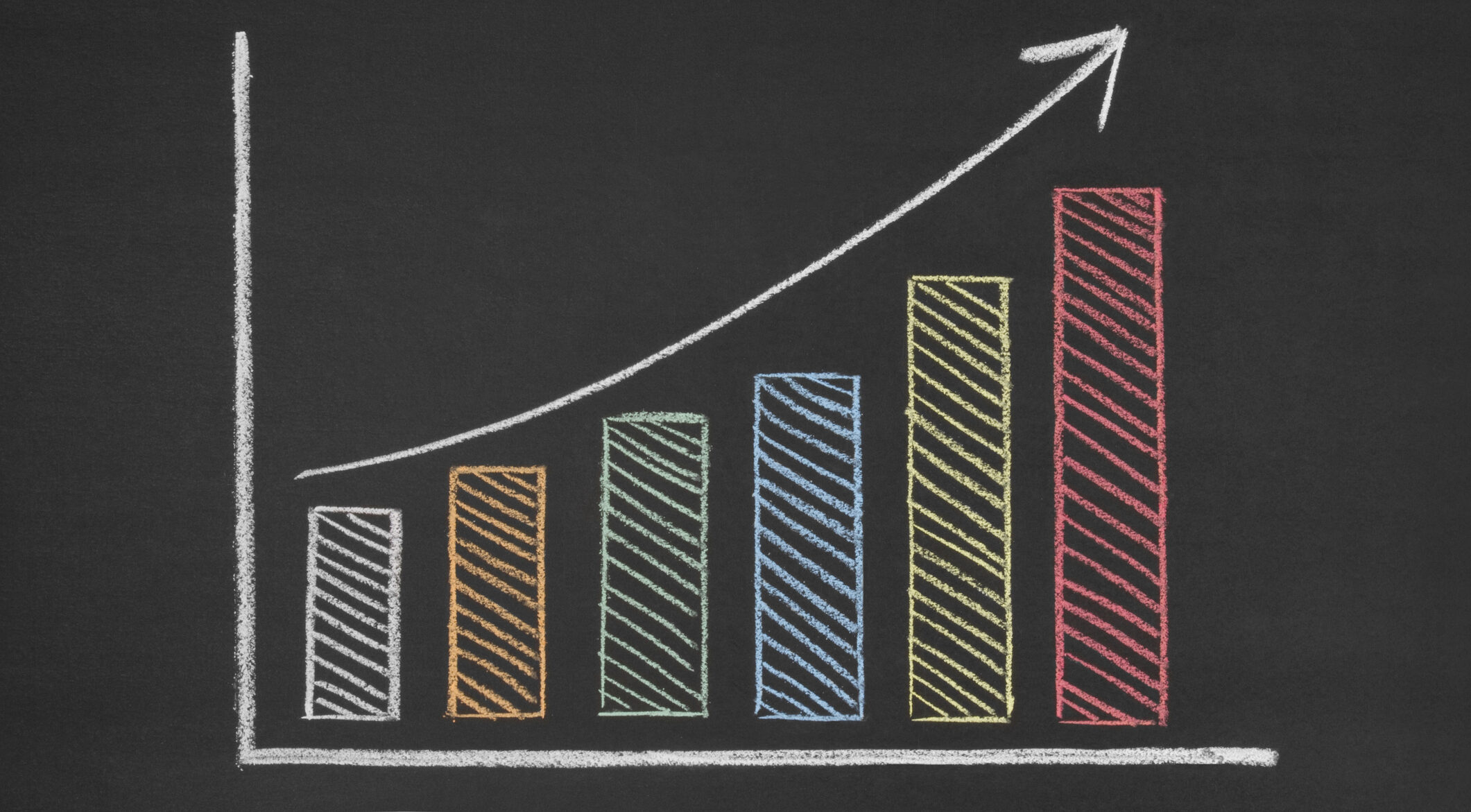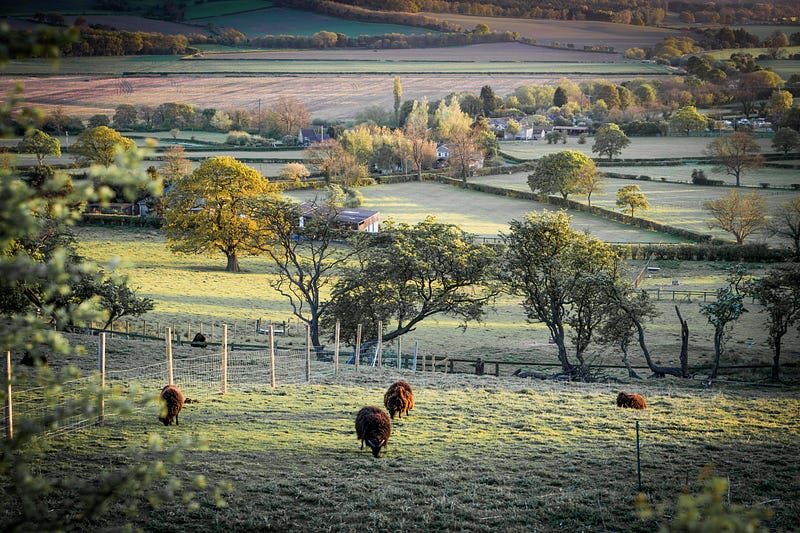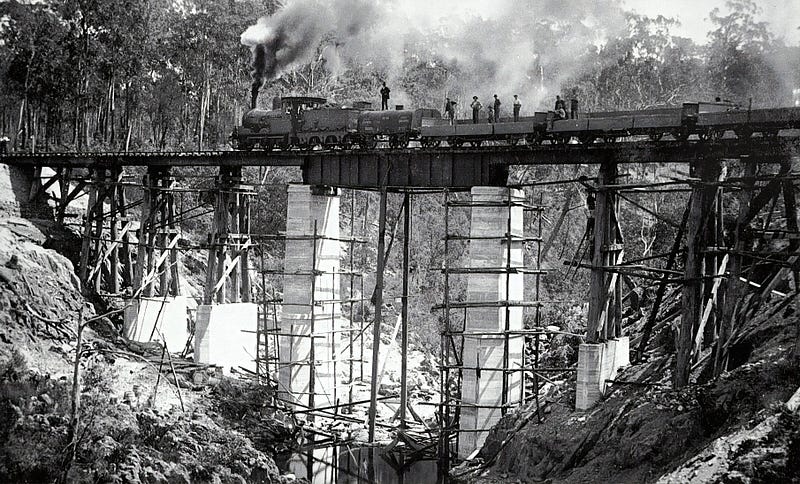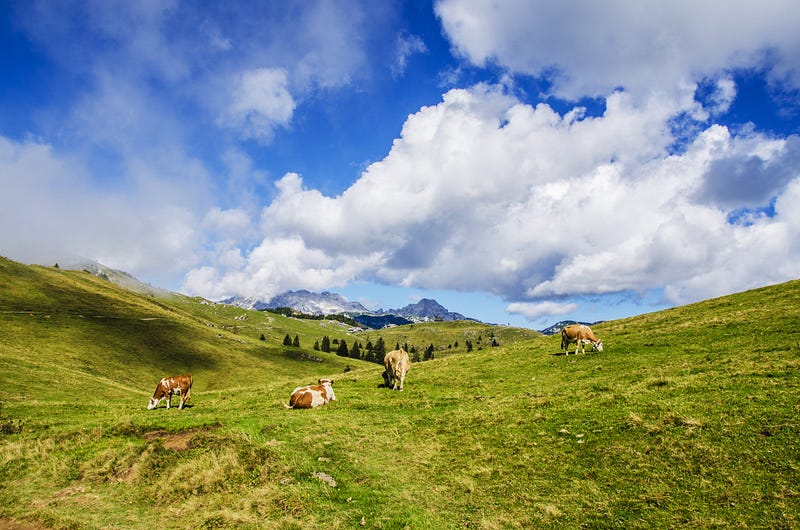A discussion of “Why Regenerative Agriculture?”
Writing previously about the un-sustainability of our Western Dietary Pattern has inspired me to look more into how we got here today. We saw the WDP as the cheapest way to eat, but also the least healthy and the most damaging to the environment.
Has the market led us astray? Is this the natural outcome of our capitalist system?
In short, I would say no. The first thing in economics, when trying to understand an outcome is, to follow the incentives.
With agriculture, the market is far from free. Layers upon layers of government programs pushing the market towards producing large amounts of the commodity crops: corn, soy, and wheat.
We got here slowly, over time, with the best intentions of having enough food. But the reality is we now have plenty of unhealthy food that is killing us.
However, is there anything we can do? Obviously, we could reverse these policies, grow less of those crops and more fruits and vegetables, but would we have enough food?
In economics, everything is connected. Our current system for meat production is heavily reliant on cheap corn and soy for cattle feed. If we lose that cheap input, can we produce enough meat?
Curious about alternatives to today’s “factory farming” method, I read Courtney White’s (2020) article about Regenerative Agriculture.
Our current system is very mechanistic. Use large equipment to prepare the field. Add these chemicals to grow plants, then these chemicals kill the weeds and insects. And our increasing technological prowess coupled with government policies have led to massive yields of commodity crops.
White is saying there is another way that works with nature and not against it.
The answer (is) to become a “knowledge-intensive” farm and work smarter, not harder. (p. 810)
Changing our Thinking
White notes that there are two different ways to approach agriculture: Chemistry versus Biology. )
Dirt is chemistry — individual particles, minerals, and other elements, including calcium, phosphorous, and potassium… Getting plants to grow in dirt is chiefly a matter of getting the chemistry right and applying it mechanistically according to a calculated prescription.
Soil is biology — bacteria, fungi, protozoa, nematodes, earthworms, reproduction, growth, life… Getting plants to grow in soil is a matter of getting the biology right. If the ground is devoid of micro-organisms, for instance, you need to foster the conditions for their return. (p. 805)
As an economist, this stood out to me. When we model production, we use a production function that transforms the inputs into outputs, given the labor and technological knowledge available.
When applying that mindset to farming, it becomes about chemistry. What chemicals need to be added as inputs to get the outputs we need? Soil health has not been part of the thought process.
What White is writing about is if we work with biology, we do not need to add chemical nutrients. And we can use animals to help with pest control so we do not need those chemicals either.
We have approached agriculture like it is a factory when instead it is a biological system. We should try to recreate the ecological balance of nature instead of working against it.
Healthy Topsoil Benefits
Clearly, we can grow healthier, nutrient dense produce from healthy soils, and we can use fewer chemical fertilizers and pesticides.
But beyond growing plants, healthy soil will give back so much more to our environment. When proper soil structure is in place, it improves its ability to (p. 800)
- store drinking water,
- recycle dead material into new life,
- circulate essential nutrients, and
- store carbon.
Further, White explains that higher levels of carbon in the soil increases the porosity of soil, increasing the capacity to hold water.
More water in the soil will make droughts easier to withstand and mitigate floods as the capacity to absorb water increases.

Five Principles to Restore Topsoil
White cites the steps to transition a conventional farm into regenerative agriculture as laid out by a farmer, Gabe Brown, in his book, Dirt to Soil. (p. 806)
- Limit disturbance of soil: Stop tilling the soil and instead adopt the no-till practice. Tilling destroys soil structure and disturbs the vital microbes and living organisms in the soil.
- Keep the soil covered: Either planting varying crops year-round or cover crops will keep the soil healthy. Conventional farming often leaves the soil bare for months at a time.
- Aim for diversity: Planning crops and animals that will work well together can keep the soil system thriving.
- Maintain living roots: Stop applying artificial fertilizers and instead allow the diversity of crops and animals to work symbiotically.
- Integrate animals: Grazing animals can control weeds and a healthy ecosystem of insects and microbes can aid plant health.
Besides having multiple plants growing in an area, regenerative agriculture also calls for raising grazing animals on the same farm. Grazing for soil formation include various benefits. (p. 807)
- Grazing stimulates root activity.
- The roots stimulate carbon exchange with soil microbes.
- The hooves can pick up seeds and distribute them as they step.
- The hooves also cause divots to the soil that will collect pockets of water.
You are not haphazardly letting the animals roam through the field. Instead, you are trying to mimic nature while carefully controlling timing, intensity and frequency for maximum benefit. (p. 808)
- Timing is the number of days the herd is in a particular paddock.
- Intensity is the size of the herd.
- Frequency is how long the paddock is rested.
This approach to farming is sometimes called Adaptive Multi-Paddock (AMP). Besides being good for soil development, it may also be good for the environment.
One study conducted by a Texas A&M University ecologist in 2016 found that grazing plots “sequestered 2.7 metric tons more carbon per hectare than plots that were continuously grazed.” (p. 808)
Further, White puts that into context: “The 2.7 metric tons of carbon from one hectare is equivalent to 1/6 of a U.S individual’s annual greenhouse gas contribution.” (p. 808)
Interestingly, White says this gives us a very different conclusion than what some argue about our food system — that we need to reduce our meat consumption to reduce the production of greenhouse gas emissions.
Quite the opposite, White says we need the cattle to sequester carbon, which can only happen when they are integrated into the agricultural process as described above.
Cattle are not the problem — our management of them is. (p. 809)
Conclusion
I don’t have all the answers from this one article yet. White asserts the potential for intensification of production by telling the story of one farm in California that could do year-round production using this method.
The Kaisers’ Singing Frogs Farm reportedly grossed over $100,000 per crop-acre per year as compared to a typical organic farm in California that would gross between $12,000 and $20,000.
More information on scalability and evidence of sufficient production to feed everyone would be something to research further. It certainly sounds promising and would lead to a better environment, a better diet, and better health.
However, such a paradigm shift would mean a lot of people losing if there is movement away from the current system. The big commodity crop growers (corn, soy and wheat), the fertilizer suppliers, the pesticide suppliers, the cattle feedlot system, the processed food manufacturers, and many more.
With our current government policies incentivizing the current factory farming system and all the interests that would be harmed by moving away from it, reform will not come easy.
Reference: White, C. 2020, “Why Regenerative Agriculture?” The American Journal of Economics and Sociology, 79:3 799–812.




